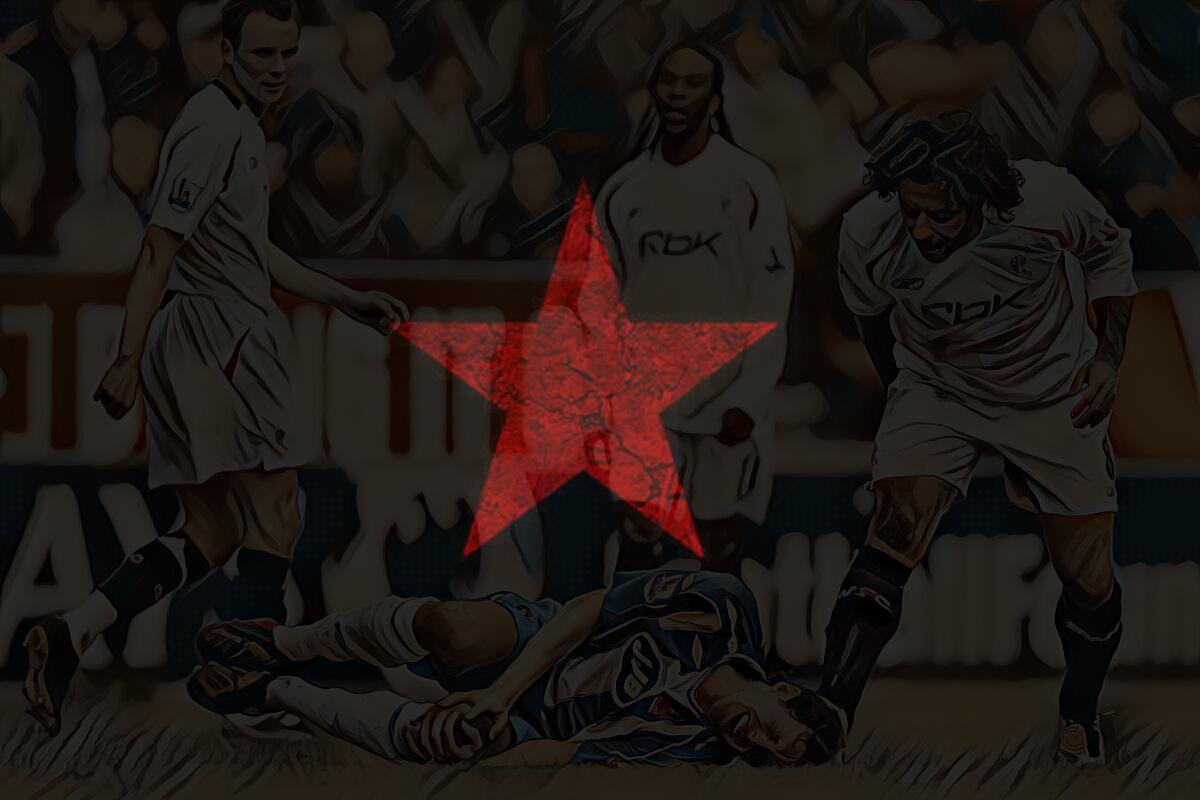
Red Star Alliance: Big Sam’s Greatest Hits (Tactics ala Allardyce)
This instalment of the Red Star Alliance series continues my current obsession with all things Sam Allardyce and outlines my FM Interpretation of a “greatest hits” (pun intended) album from his time at Bolton. These tactics were developed in conjunction with Big Sam’s Fantastic Four data metrics for my Red Star Wrexham save.
Recreating IRL tactics is my preferred approach to FM. I watched Bolton matches from their most successful period (2003-2007) where they competed in Europe and made Cup Finals. I also found several articles such as this excellent piece by Stewart Robson that validated my own findings.
FORMATION
During this era Big Sam mostly favoured a 4-1-4-1 system with a back four, holding midfielder, 2 box-to-box midfielders, and a front three. He would also play a 4-4-2 or 4-4-1-1 at times depending on the opponent and players available. Roles may have varied when in possession, but the defensive shape would be largely the same. Most players could play multiple roles so I could squeeze most of my favourite Bolton players of that era into this Fantasy XI and start building it in FM:
Defensively we have a fairly traditional setup. Jaaskelainen was a sweeper-keeper that would launch long balls from the back.
At full back, we have Nicky Hunt on the right and Gardner on the left. Hunt remained predominantly defensive in his duties while Gardner, a converted winger, had more license to move forward.
The two central defenders (usually two of Jaidi, N’Gotty, Ben Haim, Hierro or sometimes Campo) man-marked, won balls in the air and tackled. In possession, they kept it simple making passes to Campo or Okocha to start the build-up, or back to Jaaskelainen for the long ball forward.
The midfield trio combined a holding midfielder flanked by two number 8’s (box-to-box midfielder). The “8” role was approached differently with Okocha being the creative outlier of the group, but even he still tracked back defensively and pressed when required. No one got the night off on Sam’s watch.
The front three is where the most variety was on offer. Allardyce would use a mix of Target Men, redeployed midfielders, playmakers, pressing pests, and poachers in the various squads of this era. The front three were pretty much left to do the bulk of attacking but were also expected to bust a nut defensively. The wide players tracked the opposing full backs and the central striker pressing either the central defenders or deepest midfielder. Before Anelka arrived, Davies would often play centrally as a more traditional Target Man, but once Le Sulk turned up, he took on the wider role I wanted my tactic to reflect.
I couldn’t fit several players into the Fantasy XI such as Diouf, Vaz Te and Pedersen and some were played out of their natural positions. The FM match engine also posed some challenges some compromises needed to be made.
STYLE OF PLAY
Yes, Bolton did play long ball football from dead-ball situations but they were not the one-trick pony that many suggest. This was not PulisBall. Midfielders and wide players were given license to make creative passes or carry the ball forward and this was used in conjunction with verticality. Defenders could recycle the ball back to Jaaskelainen who would aim for Davies, or lay the ball off to Campo and Okocha to start attacks through midfield.
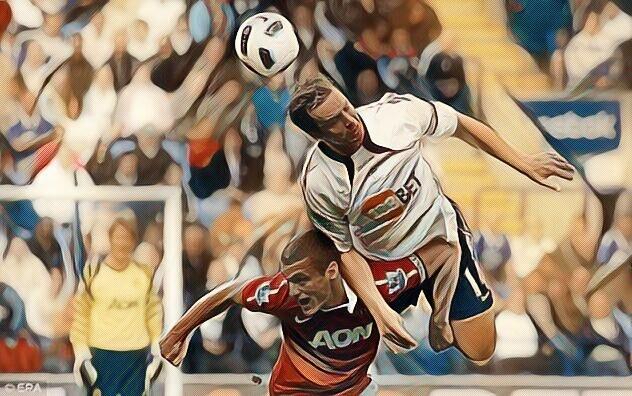
The front three would often rotate positions during games. Kevin Davies was the primary outlet for long balls. Even when he played on the right flank he would move into the centre of the park for goal kicks and free kicks to provide the long ball target. Off the ball, he displayed his incredible work rate and tracked the full back on his side of the pitch. Any of Stelios, Nolan, Vaz Te, Pedersen, Diouf or Anelka could take up central attacking positions to feed off second balls from Davies’ flick-ons and knockdowns, with a third deeper forward operating on the left either as a pressing pest (Diouf) or creative inverted winger (Djorkaeff).
Unlike most sides utilising a Target Man, Bolton wasn’t overly reliant on crosses as an attacking threat. Any width usually came from Gardner making forward runs from the left.
While they did counter-attack at times it wasn’t their standard approach as when they won the ball back in their own half the wide players would often be tracking the opposing full backs leaving few upfield outlets. They would then recycle possession through Jaaskelainen or Campo while the wide forwards moved back into position upfield.
Bolton’s use of Set Pieces as scoring opportunities was legendary and their work on the training ground paid dividends. Winning free kicks and corners in attacking positions was often the biggest offensive threat they posed.
Defensively, Bolton closed down aggressively inside own their half but would sometimes press further up if the opposition defence tried to play out from the back. If the press failed to force an early turnover they would quickly regroup into their defensive shape behind the ball. The level of aggression displayed by Bolton’s tackling cannot be understated. Teams hated playing them as the likes of Davies, Nolan, and Campo would kick the absolute stuffing out of them often injuring players in the process. Arsene Wenger probably still has nightmares.
This might be a surprise to many but Bolton didn’t play a low block. There was usually plenty of space for opponents in behind the back four (especially if Gardner was caught upfield) and Bolton was surprisingly vulnerable to hoof ball counter attacks.
THE FM INTERPRETATION
Recreating real-world tactics in FM is my primary approach to the game but given the infinite variables IRL, I think you the best you expect is to get around 60-65% there.
Over the course of around 60 games, I developed this “greatest hits of Bolton” tactic. The roles and instructions are based on my analysis and how I believe the FM match engine can best represent them.
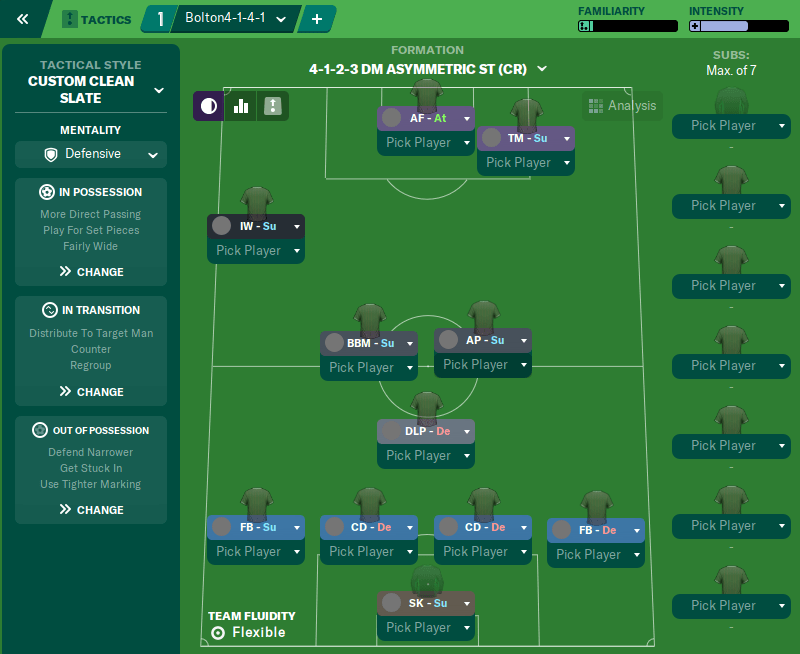
The obvious thing that stands out is the Target Man. When in possession I wanted to recreate Kevin Davies’ movement into the centre of the park but also have him defend the right flank. Watching games from the Anelka-era was really interesting as he would do the dirty work fighting for balls in the air in the middle of the park allowing Anelka and others to pick up the second ball. Davies would then move wide and track the full back if possession was turned over.
It might seem more logical to use a WTM role instead, but I found that even with PIs, I couldn’t recreate the central-to-wide movement I wanted. The WTM plays more like a winger who likes to benchpress! It can be a very effective role but I don’t think it reflects how Davies played.
So to get Davies’ on-ball/off-ball horizontal movement and the 4-1-4-1 defensive shape, I added a PI instruction for my TM to man-mark the opposing left back. Some additional instructions were added including “Close Down Less” which may seem counter-intuitive, but it stops him pressing the nearest player with the ball. He then tends to track the full back better. It ain’t perfect but it’s working.
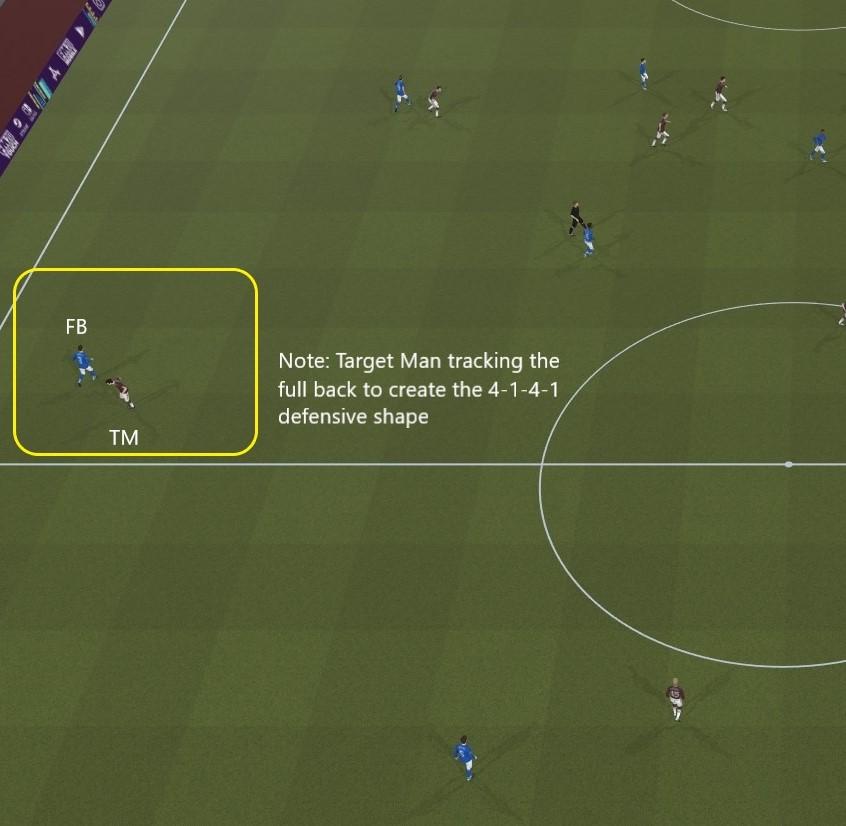
NOT ALL TARGET MEN ARE CREATED EQUAL
Given the demands of the role in this system, much like Davies himself, the Target Man must have high Work-Rate, Teamwork, Aggression, Heading, Jumping and Stamina attributes is essential. Having halfway decent Tackling and Marking qualities are also helpful for the defensive side of things. I also prefer a slightly shorter Target Man (6’2” or 6’3” is ideal) for this tactic given they need mobility.
Note: One thing that I have found is players with very similar attributes may play the TM role very differently. I experimented extensively with various TM’s on trial in pre-season friendlies to try and find the right one (and still haven’t quite found him!). I also found that those Target Men under 6’2″ don’t seem to work as well as taller players as the team don’t look to use them as a focal point for attacks. There is a clear difference to my eyes so I’m assuming there’s something in the code here that creates this effect whether intended by the developers or not.
MIDFIELD VARIATIONS
Some might question the use of two playmakers in midfield as most counter/direct-style tacticians suggest avoiding them in FM as this tends to slow the style of play. However, Bolton played both direct and through Campo and Okocha in midfield, so I found these roles essential in recreating their system. Again, it’s important to note that they were not just a hoof ball team and recycled the ball a lot.
In some matches, I may change the AP role to an RPM, BBM or MEZ if I’m looking to be a little more variation or directness in our play.
The DLP in the DM slot was used as I felt this best represented Campo the Clown. While he ran around kicking the stuffing out of blokes, he also took time on the ball and had good long-range passing skills. Bolton played often played through him so he was a ball magnet, which the DLP role can be. To reflect his aggressiveness, I added instructions for Close Down More, Mark Tighter, and Tackle Harder. As Campo had made the switch from playing as a Central Defender with Real Madrid into midfield with Bolton, I also recruited Ball Playing Defenders to play his role.

For Team Instructions I prefer to not overdo it with a maximum of 2-3 each for in possession, transition and out of possession, and refine this with PIs to tweak individual aspects of specific roles. There shouldn’t be any surprises with any of these instructions I’ve used.
I also use Opposition Instructions to exploit or nullify weaknesses and strengths. I look for weak links in the opponent such as one-footed players, poor first touch or poor conditioning. I always add instructions for the opposing left-back marked by the TM to press, mark tight, show onto right foot (if he’s a leftie), and tackle hard. Again, I only apply OIs to 2-4 players and try to not overdo it.
PUTTING IT ALL TOGETHER
By combining these tactics with the Fantastic Four I have managed to put together my favourite approach to FM. Used together, I have a simple set of data performance objectives and a tactical system that help shape my player recruitment, training and analysis of our performance.
For example two of the Fantastic Four KPIs (i.e. keeping clean sheets and outrunning opponents) lead me to believe that my tactics should use roles that cover a lot of ground (e.g. Box-to-Box) and provide a defensive screen for the defenders (DLP-d). I also know that I should recruit players with high work rate, positioning, pace, acceleration, stamina and natural fitness attributes to help us defend well and run our opponents into the ground.
Allardyce took the same approach. He recruited a few galacticos here and there but he also knew he needed to have a team willing to outwork his opponents. He built a squad that would run all day and give everything for the cause.
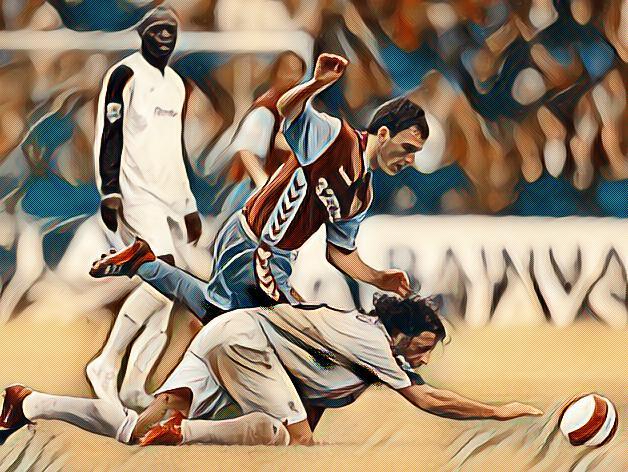
STATE OF PLAY
As per my last article, we’ve gained consecutive promotions with Red Star Wrexham and are 9th in League One after 14 games. These tactics and KPIs reflect who we are: a defensive juggernaut, but we struggle to score and our pass completion percentage is near the bottom of the league. These are areas we need to address if we are to compete in the higher leagues through recruitment and tactical refinement. We have the lowest wages in the division but some money to spend if we can convince better talents to join us. We shall see…
My other takeaway from the last 60 or so games is that SI has released a match engine that doesn’t favour the higher mentalities over the more defensive ones. As mentioned on the DTG Podcast, my concern based on a few test matches on the Public Beta is that there may be a fundamental change made to the match engine soon that changes things to cater to the “one on ones are broken” crowd. I sincerely hope not as while it’s not perfect, I’m really enjoying things as they are.
Until we meet again I’ll just leave you with this suggestion: if you find yourself at a crossroads in life, just ask yourself what would Big Sam do?
SK.
4 thoughts on “Red Star Alliance: Big Sam’s Greatest Hits (Tactics ala Allardyce)”
Hi mr. Kean.
How do you make the “close down less” instruction? I don’t see this at player instructions! :((((